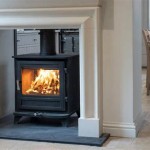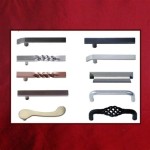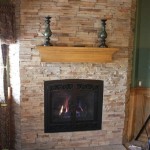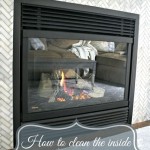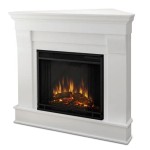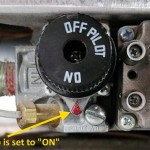How to Mount a TV Above a Stacked Stone Fireplace
Mounting a television above a fireplace, especially one adorned with stacked stone, presents a unique set of challenges and considerations. Stacked stone, while aesthetically pleasing, adds complexity to the mounting process due to its uneven surface, varying thickness, and the potential for fragile or loosely adhered stones. A successful installation requires careful planning, the right tools, and a methodical approach to ensure the television is securely mounted and the integrity of the stonework is preserved. This article provides a comprehensive guide to mounting a television above a stacked stone fireplace, covering crucial preparatory steps, the selection of appropriate mounting hardware, and detailed instructions for the installation itself.
Before commencing any work, it is imperative to address several key factors that will significantly influence the mounting process. These include assessing the structural integrity of the wall behind the stacked stone, determining the ideal viewing height and position, and understanding the potential impact of heat from the fireplace on the television. Ignoring these considerations can lead to structural damage, an uncomfortable viewing experience, and even premature failure of the television.
Assessing Wall Structure and Load-Bearing Capacity
The foundation upon which stacked stone is installed is typically a concrete block or a wood-framed wall. The structural integrity of this underlying wall is paramount. Before drilling any holes, it is essential to determine the type of wall construction present. A stud finder can be used to locate wooden studs in a framed wall. If the wall is concrete or block, specialized anchors designed for these materials will be necessary. It is also essential to verify that the wall is structurally sound enough to support the combined weight of the stacked stone, the mounting bracket, and the television. A consultation with a qualified structural engineer or contractor may be advisable, particularly if there are any doubts about the wall's load-bearing capacity or if the stacked stone appears to be poorly adhered.
The stacked stone itself contributes to the overall weight that the underlying wall must support. Different types of stone vary significantly in density, and therefore, weight. Furthermore, the method of installation can also affect the weight distribution. Carefully assess the thickness and the type of stone used to get an accurate estimation of the load. If the stacked stone is particularly thick or heavy, reinforcing the underlying wall might be necessary. This could involve adding additional studs in a framed wall or using larger, more robust anchors in a concrete or block wall.
Beyond the immediate mounting area, it is crucial to examine the overall condition of the wall. Look for any signs of cracking, crumbling, or water damage. These issues can compromise the structural integrity of the wall and should be addressed before proceeding with the television mount installation. Addressing these underlying structural issues minimizes the risk of the television or the stacked stone becoming dislodged over time.
Determining Optimal Viewing Height and Position
The height at which the television is mounted is a critical factor in ensuring a comfortable viewing experience. Mounting a television too high can lead to neck strain and discomfort, especially during prolonged viewing sessions. To determine the optimal viewing height, consider the typical seating arrangement in the room. The general rule of thumb is to position the center of the television screen at eye level when seated. This usually places the bottom edge of the television slightly above the mantel or the top edge of the fireplace. However, individual preferences may vary, and it is always best to simulate the viewing experience by temporarily holding the television in place to assess the comfort level.
Beyond height, the viewing angle is another important consideration. The angle at which the television is viewed should be within a comfortable range to minimize distortion and maintain optimal image quality. A tilting mount can be used to adjust the vertical viewing angle, particularly if the television is mounted higher than ideal. The horizontal viewing angle should also be considered, especially if the seating area is wide. A full-motion mount allows for adjusting the television horizontally, ensuring a clear view from various seating positions.
The size of the television also plays a role in determining the ideal viewing distance and height. Larger televisions typically require a greater viewing distance to avoid eye strain. Consult online resources or television manufacturers' guidelines to determine the recommended viewing distance for the specific television model. This information can help to further refine the positioning of the television above the stacked stone fireplace.
Addressing Heat Considerations and Cable Management
Heat generated by the fireplace is a significant concern when mounting a television above it. Excessive heat can damage the internal components of the television, leading to premature failure. To mitigate this risk, it is essential to take steps to minimize heat exposure. Consider the type of fireplace being used. Gas fireplaces generally produce less heat than wood-burning fireplaces. However, even gas fireplaces can generate enough heat to damage a television. A mantel can provide a degree of protection by deflecting heat away from the television. The wider the mantel, the more effective it will be at shielding the television from rising heat.
Maintaining a sufficient distance between the top of the fireplace and the bottom of the television is crucial. A minimum of 12 inches is generally recommended, but a greater distance may be necessary depending on the type of fireplace and the amount of heat it generates. Regularly monitor the temperature behind the television while the fireplace is in use to ensure it does not exceed the manufacturer's recommended operating temperature range. Installing a heat shield can also provide an extra layer of protection. These shields are typically made of metal or other heat-resistant materials and are designed to deflect heat away from the television.
Effective cable management is also an important consideration. Wires dangling from the television can detract from the aesthetic appeal of the installation and create a potential safety hazard. Plan for concealing the cables behind the wall or using cable management systems to keep them organized and out of sight. This may involve drilling holes through the wall to run cables behind it, or using cable raceways to conceal them along the surface. Ensure that the cables are properly secured to prevent them from becoming tangled or damaged. Utilize cable ties or Velcro straps to bundle and organize the cables, and label each cable to make it easier to identify them in the future.
Selecting Appropriate Mounting Hardware and Tools
Choosing the appropriate mounting hardware is critical for a secure and stable television installation above a stacked stone fireplace. The mount must be specifically designed to support the weight of the television and be compatible with the VESA (Video Electronics Standards Association) mounting pattern on the back of the television. This pattern is a standardized arrangement of mounting holes, and the VESA standard specifies the distance between these holes in millimeters. Measure the VESA pattern on the back of the television to ensure compatibility with the chosen mount.
Several types of television mounts are available, each offering different features and benefits. A fixed mount holds the television flush against the wall, providing a low-profile appearance. A tilting mount allows for adjusting the vertical viewing angle. A full-motion mount provides the greatest flexibility, allowing for adjusting the television horizontally and vertically, as well as extending it away from the wall. The choice of mount will depend on the desired viewing angle, the size and weight of the television, and the available space.
For stacked stone installations, specialized anchors may be necessary. Standard drywall anchors are not suitable for use in stone. Instead, use concrete anchors or sleeve anchors that are specifically designed for masonry. These anchors are more robust and can provide a secure hold in the dense and often uneven surface of stacked stone. Select anchors that are long enough to penetrate through the stacked stone and into the underlying wall stud or concrete block. The length of the anchor should be approximately 2-3 inches longer than the thickness of the stacked stone.
In addition to the mounting hardware, several tools are essential for a successful installation. A stud finder is necessary for locating wooden studs in a framed wall. A level is crucial for ensuring that the television is mounted straight. A drill with a masonry bit is required for drilling holes through the stacked stone and into the underlying wall. A socket wrench or adjustable wrench is needed for tightening the mounting bolts. A measuring tape is useful for determining the optimal viewing height and position. Finally, safety glasses and gloves should be worn to protect your eyes and hands during the installation process.
Installation Procedure: A Step-by-Step Guide
Once the preparatory steps are completed and the necessary hardware and tools are assembled, the installation process can begin. This process requires careful attention to detail and a methodical approach to ensure a secure and aesthetically pleasing result. Always consult the manufacturer's instructions for both the television and the mounting bracket before commencing the installation.
The first step is to locate the wall studs or determine the location for concrete anchors behind the stacked stone. Use a stud finder to identify the studs in a frame wall, marking their locations with a pencil. If the wall is concrete, determine the desired mounting location and mark it accordingly. If the stones are uneven, carefully choose a relatively flat mounting surface. Precision is key in this step, as it will dictate the stability of the television mount.
Next, attach the mounting bracket to the wall. Position the mounting bracket over the marked locations and use a drill with a masonry bit to drill pilot holes through the stacked stone and into the underlying wall stud or concrete. Insert the appropriate anchors into the pilot holes and tighten them securely using a socket wrench or adjustable wrench. Ensure that the mounting bracket is level before fully tightening the anchors. A helper can be useful in holding the bracket in place while the anchors are being tightened. Double-check the stability of the bracket after installation.
Attach the mounting arms to the back of the television, using the screws provided with the mounting bracket. Ensure that the mounting arms are securely attached to the VESA mounting pattern on the back of the television. Gently lift the television and carefully align the mounting arms with the mounting bracket on the wall. Secure the television to the mounting bracket using the provided hardware. Double-check that all screws and bolts are tightened securely.
Finally, connect the cables to the television and conceal them properly. Connect the power cord, HDMI cables, and any other necessary cables to the television. Use cable ties or Velcro straps to bundle and organize the cables. Conceal the cables behind the wall or use cable management systems to keep them out of sight. Test the television to ensure that it is functioning properly. Make any necessary adjustments to the viewing angle or position. This process ensures that the television is securely mounted and provides an optimal viewing experience, while also maintaining a clean and organized appearance.

Mounting A Tv Above Fireplace With Full Tutorial Fixthisbuildthat

Mounting A Tv Above Fireplace With Full Tutorial Fixthisbuildthat

Mounting Tv Over Stone Fireplace In Charlotte Nc 28226

Mantelmount How To Mount Your Tv Above A Fireplace Infarrantly Creative

Installing Stack Stone On Fire Place With Mantel Tv Sound Bar

How To Mount Tv On Stone Fireplace Installation Guide

Stacked Stone Fireplace With Tv Mount Fireplaces

Mounting A Tv Above Fireplace With Full Tutorial Fixthisbuildthat

Matt S Fireplace Design With The Tv Mounted Above Genstone

Mounting A Tv Above Fireplace With Full Tutorial Fixthisbuildthat

